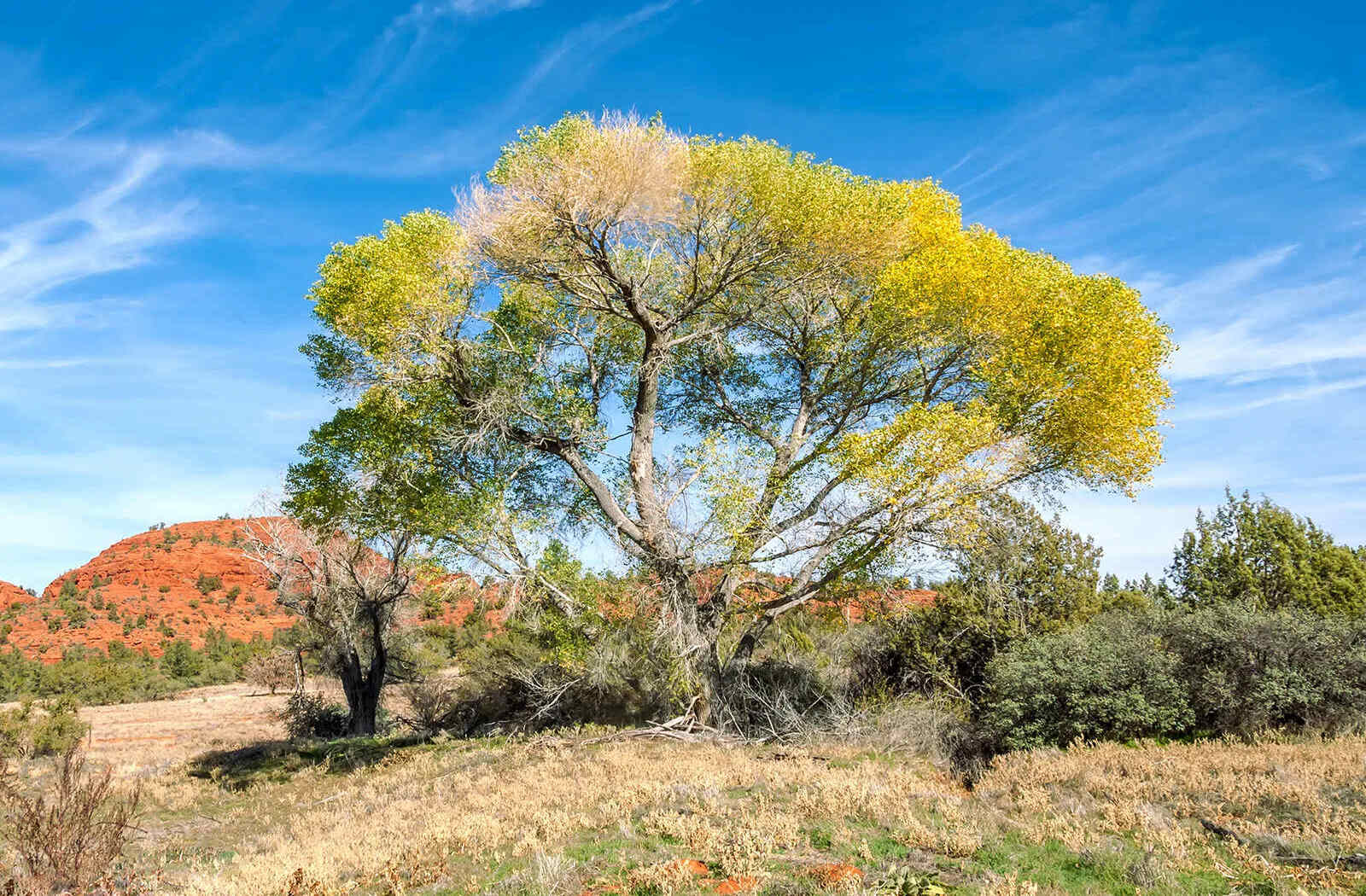
The black poplar tree, also known as Populus nigra, is a majestic and iconic species that holds a significant place in the natural world. With its striking black bark and shimmering leaves, this tree stands as a symbol of strength and resilience. From its historical significance to its ecological importance, the black poplar tree captivates the imagination and offers a wealth of benefits to the environment and beyond. In this article, we will delve into 11 fascinating facts about the black poplar tree, shedding light on its unique characteristics, cultural relevance, and ecological impact. Let's embark on a journey to uncover the remarkable traits and contributions of this remarkable tree.
Key Takeaways:
- The Black Poplar tree, with its rapid growth and distinctive diamond-shaped leaves, is not only a beautiful addition to landscapes but also a vital supporter of biodiversity, facing threats that inspire conservation efforts.
- The Black Poplar tree’s rich cultural history, medicinal properties, and economic importance highlight its resilience and adaptability, serving as a reminder of nature’s capacity to endure and flourish.
It's a fast-growing tree
The Black Poplar tree (Populus nigra) is known for its rapid growth rate, making it a popular choice for landscaping and reforestation projects. This deciduous tree can add a touch of elegance to any landscape while providing quick shade and visual interest.
It's a native European species
The Black Poplar tree is native to Europe, where it thrives in a variety of habitats, from riverbanks to urban areas. Its adaptability and resilience make it a valuable species for ecological restoration and urban greening initiatives.
It has a distinctive diamond-shaped leaf
One of the most recognizable features of the Black Poplar tree is its diamond-shaped leaves, which flutter in the breeze, creating a soothing rustling sound. This unique leaf shape adds to the tree's aesthetic appeal and sets it apart from other species.
It's dioecious
The Black Poplar tree is dioecious, meaning it has separate male and female trees. The male trees produce catkins, which release pollen, while the female trees bear clusters of capsules containing seeds. This reproductive strategy contributes to the tree's genetic diversity and ensures successful pollination.
It has a rich cultural history
The Black Poplar tree has a rich cultural history, featuring in folklore, literature, and art. It has been revered for its resilience and beauty, symbolizing strength and endurance in various traditions.
It supports biodiversity
The Black Poplar tree plays a crucial role in supporting biodiversity by providing habitat and food for various species. Its presence contributes to the overall health of ecosystems, making it a valuable component of natural landscapes.
It's under threat
Despite its ecological significance, the Black Poplar tree faces threats from habitat loss, river regulation, and hybridization with non-native poplar species. Conservation efforts are underway to safeguard this iconic tree and preserve its genetic diversity.
It has medicinal properties
Various parts of the Black Poplar tree, including the bark and buds, have been used in traditional medicine for their therapeutic properties. From alleviating pain to treating respiratory ailments, this tree has been valued for its medicinal benefits for centuries.
It's a symbol of resilience
The Black Poplar tree's ability to thrive in diverse environments and withstand environmental challenges has led to its symbolic association with resilience and adaptability. Its presence serves as a reminder of nature's capacity to endure and flourish.
It's a source of timber
The wood of the Black Poplar tree is valued for its strength and workability, making it a sought-after material for crafting furniture, musical instruments, and other wooden products. Its use in woodworking highlights the tree's economic importance and versatility.
It inspires conservation efforts
The unique characteristics and ecological significance of the Black Poplar tree have inspired conservationists, botanists, and nature enthusiasts to advocate for its protection and restoration. Through collaborative initiatives, efforts are underway to conserve this iconic tree for future generations.
The Black Poplar tree, scientifically known as Populus nigra, is a fast-growing deciduous tree native to Europe. It is renowned for its rapid growth rate, making it a favored choice for landscaping and reforestation projects. The distinctive diamond-shaped leaves of the Black Poplar tree create a mesmerizing visual effect as they flutter in the breeze, adding to its aesthetic appeal. This dioecious species features separate male and female trees, contributing to its genetic diversity and successful reproduction. The Black Poplar tree holds a significant place in cultural history, symbolizing strength and endurance in various traditions. Moreover, it plays a vital role in supporting biodiversity by providing habitat and food for diverse species. Despite its ecological importance, the Black Poplar tree faces threats from habitat loss and hybridization with non-native species, prompting conservation efforts to safeguard its genetic diversity. Additionally, the tree has been valued for its medicinal properties, with various parts used in traditional medicine for their therapeutic benefits. The wood of the Black Poplar tree is highly valued for its strength and workability, making it a sought-after material for woodworking. Its symbolic association with resilience and adaptability serves as a reminder of nature's capacity to endure and flourish, inspiring conservation efforts to protect and restore this iconic tree for future generations.
Conclusion
In conclusion, the black poplar tree is a fascinating and valuable species that holds a significant place in the ecosystem. Its unique characteristics, such as rapid growth, tolerance to various conditions, and ecological importance, make it a vital component of the natural world. By understanding the diverse uses and ecological significance of the black poplar, we can appreciate and conserve this remarkable tree for future generations to enjoy.
FAQs
What are the distinctive features of the black poplar tree?The black poplar tree is known for its tall stature, diamond-shaped leaves with serrated edges, and distinctive black, furrowed bark. It is also recognized for its rapid growth and ability to thrive in diverse environmental conditions.
How can the black poplar tree benefit the environment?The black poplar tree plays a crucial role in stabilizing riverbanks, providing habitat for various wildlife species, and contributing to the overall biodiversity of its surroundings. Additionally, it offers valuable ecosystem services, such as air purification and carbon sequestration, making it an essential component of healthy ecosystems.
Was this page helpful?
Our commitment to delivering trustworthy and engaging content is at the heart of what we do. Each fact on our site is contributed by real users like you, bringing a wealth of diverse insights and information. To ensure the highest standards of accuracy and reliability, our dedicated editors meticulously review each submission. This process guarantees that the facts we share are not only fascinating but also credible. Trust in our commitment to quality and authenticity as you explore and learn with us.


